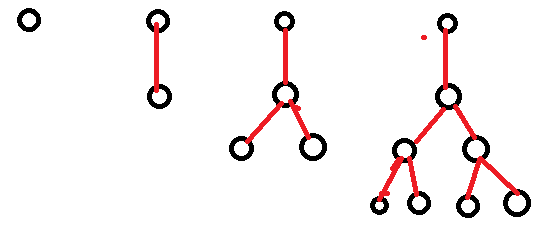Consider a variation of the normal heap which we will call the x-heap
The x-heap of height $h$ has the following properties:
It will have $2^h$ nodes
A height of $0$ corresponds to the single root node
The format of the tree is a root with exactly one child, which in turn is the root of a complete binary tree
We define a collection of x-heaps to be sequence $X_0, X_1,\dots,X_k$ with the following properties:
$height(X_{i-1})\leq height(X_i)$, where $0\leq i \leq k$
There exist at least $i + 1$ (X-heaps) of $height \leq i$, where $0\leq i \leq k$
There exist at most $i + 2$ (X-heaps) of $height \leq i$, where $0\leq i \leq k$
We cannot have a collection with all of the same type of x-heap (can't have collection with all single nodes)
Prove that if $X_0,X_1,\dots,X_k$ is a collection, then the total number of nodes is between $2^k$ and $2^{k+1}$
I am not sure where to start here. I feel I must use the last two bullet points, but not sure how.
Moreover, the trees in a collection can have height $1, 3, 4, 8$ as an example. It is not limited to increasing by $1$.

